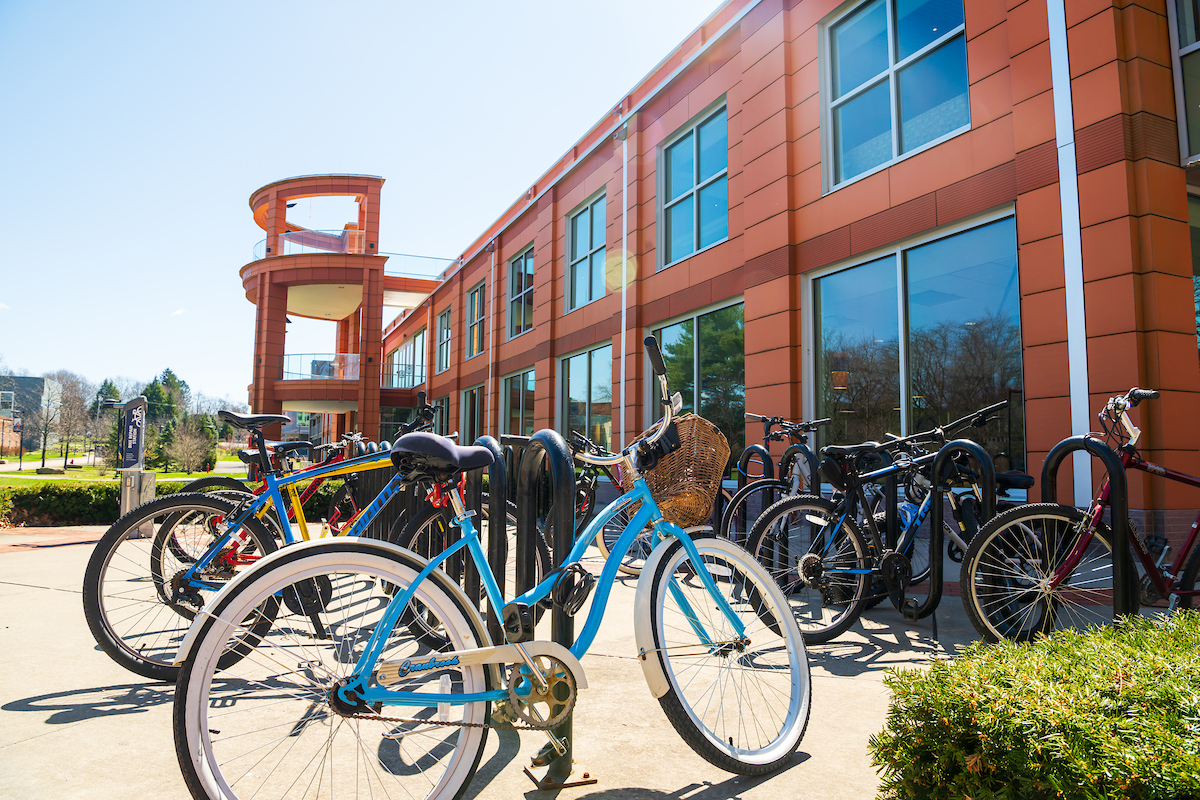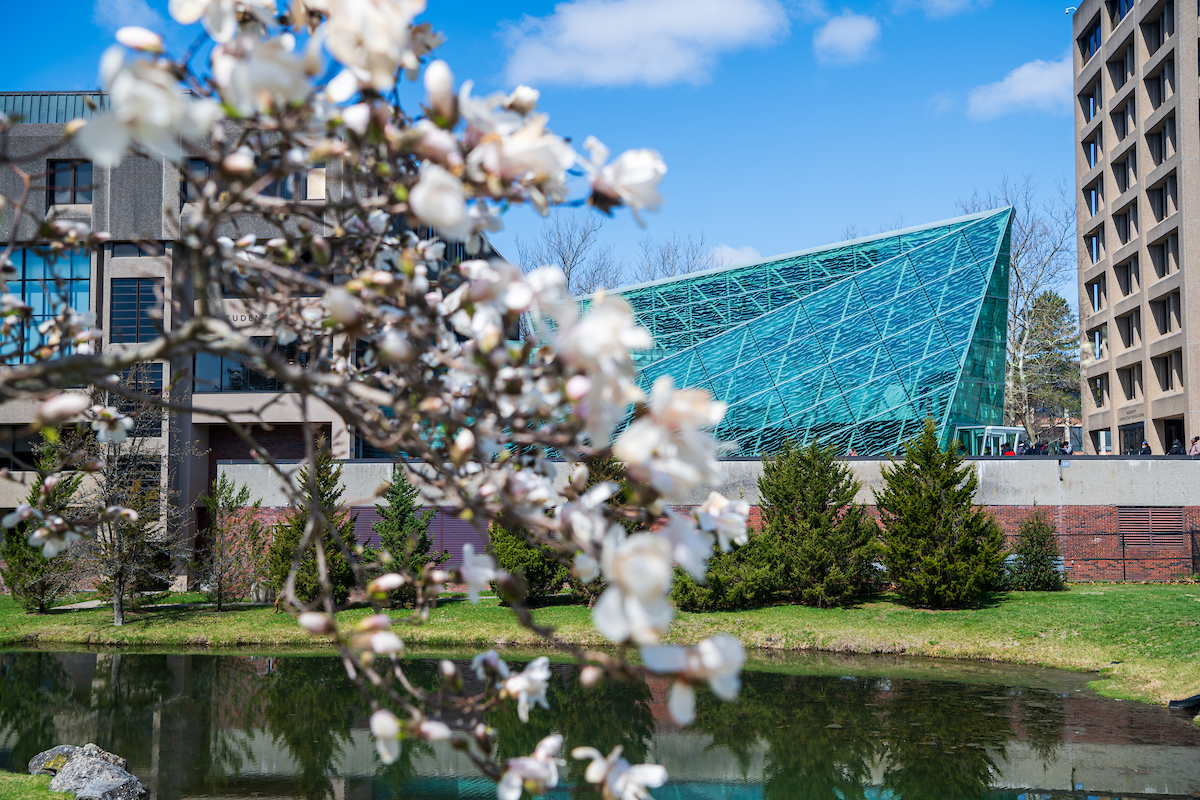SUNY New Paltz announces a 46% reduction in greenhouse gas emissions since 2001
This Earth Week, SUNY New Paltz is proud to announce a 46% reduction in the campus’s Scope 1 and Scope 2 greenhouse gas emissions from 2001 to 2024, exceeding the target set out in the New York State Climate Act of 2019 of 40% reductions by 2030.
The University’s greenhouse gas emission reduction achievements are due to an all-of-Facilities Management effort to conserve energy and improve energy efficiency of building systems. They reflect comprehensive efforts in areas from fuel purchases for building heating, hot water and campus fleet vehicles (Scope 1) to purchased electricity (Scope 2).
“I’m very proud of the whole Facilities Management team for the work that they put in to surpass the New York State greenhouse gas emission goals,” said Scott Cline, Assistant Vice President for Facilities Management at SUNY New Paltz. “We will continue to focus on modernizing existing infrastructure with equipment that decreases the University’s impact on the environment.”

New Paltz’s successes in cutting emissions owe to a truly cross-campus effort, spearheaded by Facilities Operations and the Office of Design & Construction, that has included the following actions:
Fuel Switching. In 2006, SUNY New Paltz transitioned to natural gas as its primary fuel source for space heating and domestic hot water.
LEED Buildings. Since 2011, eight campus buildings have earned LEED certification at either the Gold or the Silver level. In addition, the new renovations at Awosting and Mohonk Halls were designed to meet LEED standards. In all, 536,000 square feet of campus building space is LEED certified or designed to meet LEED standards, for a total of 23% of the total campus square footage.
High Temp Hot Water (HTHW) System Improvements. The HTHW system is a complex, campus-wide pumping system that provides heat and hot water to 30+ buildings and 90% of the total building square footage on campus. In 2021, Facilities Operations & Maintenance shifted the HTHW system from operating at a constant temperature to modulating system temperatures at the Central Heating Plant to correspond with outdoor air temperature. Pumps at the Central Heating Plant were upgraded to variable frequency drives and system-wide pressures were reduced to improve energy efficiency.
Building-Level Efficiency Improvements. Upgrades have included variable frequency drive pumps, which decreased energy consumption, and control systems that use outdoor air temperatures to better manage hot water flow throughout the buildings.
LED Lighting Upgrades. In the 2010s, SUNY New Paltz transitioned 100% of exterior lighting to LEDs. Work continues to replace interior spaces with LEDs, currently at 47% complete and improving every year.
Mechanical Room Pipe Insulation. In 2017, SUNY New Paltz installed insulated thermal jackets on mechanical room piping in 25 buildings across campus.
Domestic Hot Water in Residence Halls. Over the past decade, SUNY New Paltz transitioned the source of domestic hot water in residence halls from the Central Heating Plant to building-level natural gas-fired boilers. Water-efficient fixtures that meet LEED water reduction standards have been installed in 6 out of 14 residence halls.
Solar Photovoltaics. SUNY New Paltz owns and operates 5 solar photovoltaic arrays totaling 274 KW, including the 100 KW array at the Elting Gym connected to a 200 kwh battery storage system.
“Thanks to the dedication of Facilities Management staff and leadership, SUNY New Paltz has met and exceeded New York State greenhouse gas emissions reduction goals five years early,” said Campus Sustainability Coordinator Lisa Mitten.
Click here for more information about sustainability initiatives at SUNY New Paltz.

